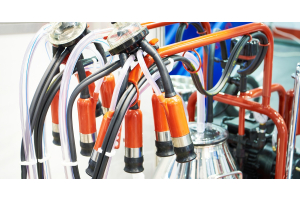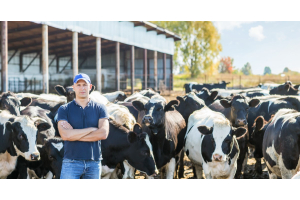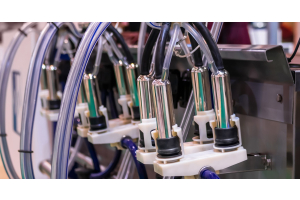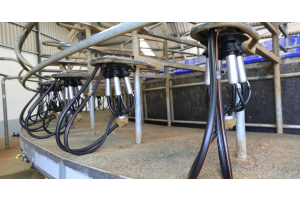What Makes a Happy Cow? Animal Welfare in Dairy Farming

Animal welfare is the foundation of successful dairy farming, encompassing the physical, behavioral, and psychological well-being of cattle. Modern dairy operations recognize that prioritizing cow happiness extends beyond ethical responsibility and is also a strategic business decision.
When dairy cows experience optimal welfare conditions, they enjoy increased milk production, improved reproductive performance, and enhanced longevity. Learn what makes a happy cow to improve animal welfare in dairy farming for an environment where cattle thrive while meeting production goals.
The Connection Between Cow Happiness and Milk Quality
Stress impacts dairy cow physiology, directly affecting milk production volume and composition. When cows experience chronic stress due to environmental factors, handling practices, or social disruption, their cortisol levels increase, resulting in decreased milk yield.
Contented cows produce milk with improved somatic cell counts, indicating better udder health and reduced mastitis risk. The relationship between cow comfort and milk quality creates a compelling case for prioritizing animal welfare as a pathway to enhanced profitability.
Understanding the Physical Needs of Dairy Cows
Proper nutrition is the cornerstone of dairy cow welfare, requiring balanced rations that meet energy, protein, vitamin, and mineral requirements throughout different lactation stages. Feed quality has a direct impact on cow health, reproduction, and milk production, making consistent nutritional management crucial for maintaining herd well-being.
Dairy cows require access to high-quality pastures, supplemented with concentrates that support their metabolic demands during peak lactation periods. Monitoring body condition scores allows farm managers to assess whether nutritional programs effectively support cow welfare and production goals.
Creating a Comfortable Living Environment
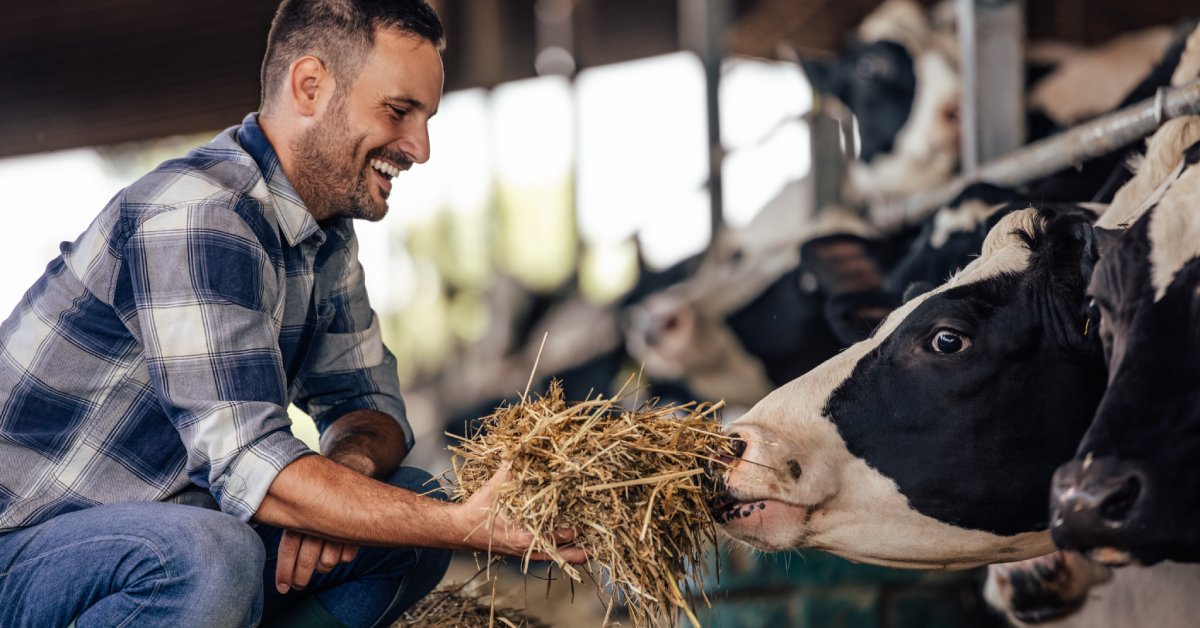

Housing systems support dairy cow welfare, with well-designed facilities promoting natural behaviors while protecting animals from environmental stressors. Adequate space allocation allows cows to move freely, lie down comfortably, and access feeding and watering areas without competition or overcrowding. Proper ventilation systems maintain air quality by removing moisture, ammonia, and other harmful gases that may compromise respiratory health.
Temperature control through natural or mechanical ventilation helps cows maintain optimal body temperature, reducing heat stress during warm weather and cold stress in the winter. Clean, dry bedding materials provide comfort for resting while minimizing the risks of mastitis and other health issues associated with poor environmental conditions.
Veterinary Care and Health Management
Comprehensive veterinary care programs for cows include preventive medicine, early disease detection, and prompt treatment protocols that maintain herd health and individual cow welfare. Regular health assessments allow veterinarians and farm staff to identify potential issues before they develop into serious conditions that compromise animal well-being.
Vaccination programs protect against common diseases while reducing the need for treatments that may cause stress or discomfort. Hoof care programs prevent lameness, which impacts a cow’s mobility, feeding behavior, and overall quality of life.
Stress-Free Milking Practices
Milking procedures also influence cow comfort and stress levels, requiring consistent routines and gentle handling techniques that promote relaxation during the milking process. The milking environment should be calm and quiet, with minimal disruptions that might cause anxiety or fear responses in dairy cows.
Proper milking equipment maintenance keeps vacuum levels, pulsation rates, and other system parameters operating within recommended ranges to prevent discomfort or injury. Using a high-quality milking bucket for cows requires attention to cleanliness and gentle techniques that minimize stress while maintaining milk quality standards. Training milking staff in low-stress handling techniques creates positive experiences that encourage cows to enter the milking parlor willingly.
Recognizing and Addressing Emotional Well-Being
Dairy cows express emotions through various behavioral and physiological indicators that trained observers learn to recognize and interpret. Signs of distress include changes in feeding patterns, social withdrawal, aggressive behavior, or abnormal vocalizations that indicate discomfort or anxiety.
Environmental enrichment through brushes, varied terrain, or social interaction opportunities improves animal welfare in your dairy farming and makes cows happy. Creating predictable routines helps reduce anxiety by establishing expectations that cows anticipate and prepare for throughout their daily activities.
The Role of Herd Behavior and Social Interactions
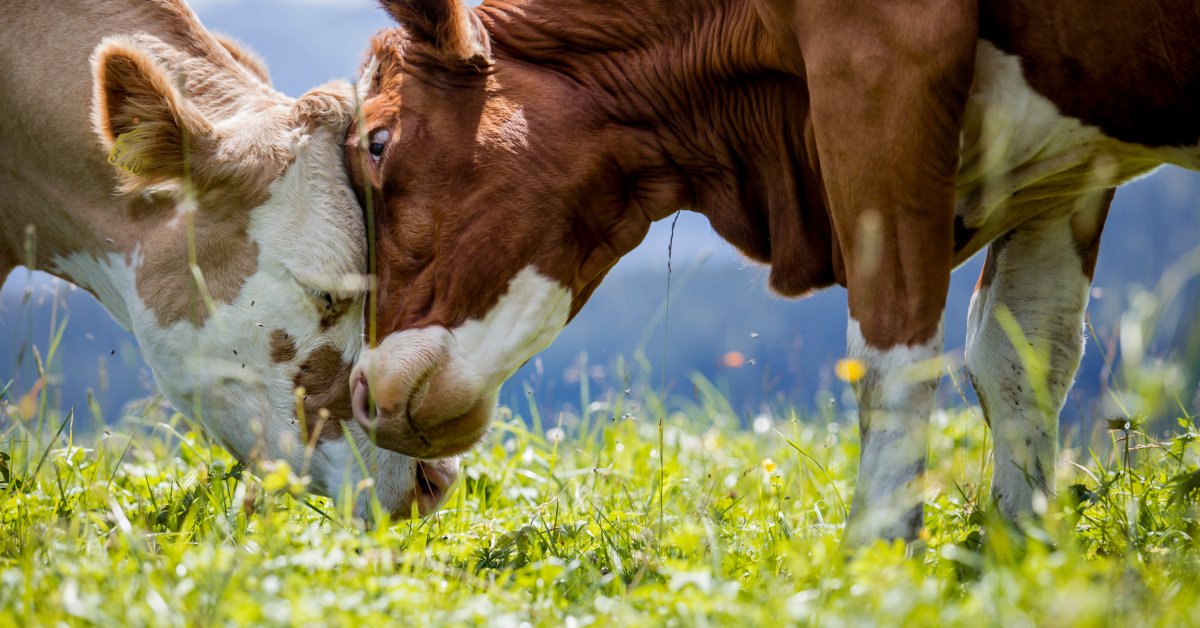

Dairy cows are inherently social animals that establish complex hierarchical relationships within their herds, making group management a fundamental aspect of welfare. While some of these social constructs may cause stress if a cow is in a lower “class” and has few acquaintances, social dominance does not affect milk production.
Stable social groups reduce stress and aggressive behaviors, allowing cows to express natural behaviors such as grooming, playing, and synchronized feeding. Group size management prevents overcrowding while ensuring that animals maintain social connections that contribute to their psychological well-being.
Introducing new animals to established groups requires careful planning and monitoring to minimize disruption and social stress. Understanding cow behavior patterns helps farm managers design facilities and management protocols that support natural social interactions.
Training and Education for Farm Staff
Effective animal welfare depends on knowledgeable farm staff who understand cow behavior, recognize welfare indicators, and implement appropriate handling techniques. Training programs should cover topics such as low-stress handling, disease recognition, proper equipment use, and emergency response protocols.
Regular education updates help staff members stay current with evolving welfare standards and best practices in dairy cow management. Empowering employees to make welfare-based decisions creates a culture of care that extends throughout the entire dairy operation.
Ethical Considerations in Dairy Farming
Modern dairy farming has faced increasing scrutiny regarding animal treatment, requiring operations to balance production efficiency with high ethical animal care standards. Consumer awareness of farming practices drives demand for products from farms that demonstrate a commitment to animal welfare through transparent and verifiable practices.
Ethical dairy farming involves making decisions that prioritize animal well-being, even when those choices may require additional investments or operational changes. Industry standards and certification programs provide frameworks for implementing and verifying welfare practices that meet consumer expectations and regulatory requirements. Developing ethical guidelines helps farm managers navigate complex decisions while maintaining profitability and social license to operate.
The Economic Benefits of Happy Cows
Investing in animal welfare yields measurable economic benefits through enhanced milk production, reduced veterinary costs, and extended cow longevity. Healthy, comfortable cows require fewer medical interventions, reducing treatment costs and labor time associated with managing sick animals.
Improved reproduction rates result from better welfare conditions, leading to more efficient breeding programs and reduced replacement costs. Enhanced milk quality commands premium prices in markets that reward farms for superior product standards and welfare practices. Long-term profitability increases when dairy operations view animal welfare as an investment in sustainable production rather than an additional cost.
Technological innovations continue to provide new tools for monitoring and improving dairy cow welfare through automated systems and data collection platforms. Future success in dairy farming will increasingly depend on operations that demonstrate measurable commitment to animal welfare while maintaining economic sustainability and environmental responsibility.






